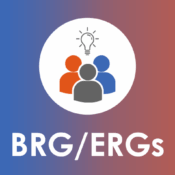
Effective Communication Should Be The Rule, Not The Exception
Last week, my wife, Jennifer, had outpatient surgery (she’s quickly recovering and has a follow-up appointment with her doctor in a few days).
A week before her surgery, Jennifer contacted the hospital and requested an on-site interpreter. However, the day before the surgery, the hospital staff called me and shared they were not sure if my wife wanted an on-site interpreter or interpreting services via Video Remote Interpreting (VRI). VRI providers use videoconferencing technology, equipment, and a high-speed Internet connection to provide sign language interpreting services at a remote location – while a beneficial tool, there can be a number of issues encountered when using this service.
Immediately, I was concerned an on-site interpreter had yet to be secured. Securing an interpreter for an extended period of time, especially with less than 24-hours notice, was highly unlikely. Nonetheless, I stressed Jennifer had already asked for an on-site interpreter and that the use of VRI would not result in effective communication as defined by Federal civil rights laws.
Both Jennifer and I have used VRI before. However, because her procedure required anesthesia, we were concerned VRI would not be an appropriate solution, especially when we did not know how Jennifer would react to the anesthesia, let alone the procedure itself.
Luckily, a few hours later, I received a follow-up call from the hospital confirming an on-site interpreter was secured; much to our delight, the interpreter was one we both knew and were comfortable working with.
When we arrived at the hospital the day of the surgery, we saw a VRI machine sitting outside of Jennifer’s room. Fortunately, this device was not needed.
What turned out to be a positive experience could have easily gone the other way!
One of the nurses was soft spoken; the other had a slight accent. While both nurses working with Jennifer were fantastic, they both shared they have never used VRI for sign language purposes before, let alone were not trained in using VRI.
This could have made a potentially bad situation even worse.
When Jennifer was brought out of recovery and was weaned off of anesthesia, she had a very difficult time opening her eyes. While waking up, Jennifer ‘sluggishly’ signed, “water, I’m thirsty.” Even though Jennifer speaks well, she prefers to use American Sign Language to communicate. This was evident in a moment of stress and, thankfully, there was an interpreter present to facilitate Jennifer’s request.
Would the nursing team have positioned the VRI tablet appropriately to make sure the remote interpreter would be able to see Jennifer signing, especially when waking up from the procedure? Not only that, would Jennifer have been able to focus on an iPad to see what the interpreter was signing, especially when struggling to wake up from anesthesia?
Fortunately, because an on-site interpreter was present, she maneuvered around the room to ensure effective communication took place.
Furthermore, the nursing team didn’t know to ask what Jennifer would do with her glasses or hearing aid during surgery – to this end, we suggested that they give Jennifer her glasses as soon as she started waking up so she could see the interpreter and I would hang on to her hearing aid during the procedure (per protocol, family members need to wait in the waiting area until the patient is situated and awake after surgery).
But when Jennifer came out of surgery, she was very sensitive to light and had a throbbing headache. As a result, the lights in Jennifer’s room were dimmed and she did not put on her glasses. Would Jennifer have been able to see the interpreter displayed on the iPad? Would Jennifer have been in a position to effectively advocate for herself?
If an on-site interpreter was not present and we were required to use VRI, I would have made sure I was in the recovery room when Jennifer was brought out of surgery. There was no way I would have subjected her to try to capture signs from an interpreter displayed on an iPad – Jennifer’s main objective was to recover from her procedure, not struggle to communicate with the surgical team.
While we left satisfied with our experience, we know this is not the case for many other Deaf and Hard of Hearing individuals. Why should our experience be the exception, not the rule?
(Originally posted on LinkedIn).



